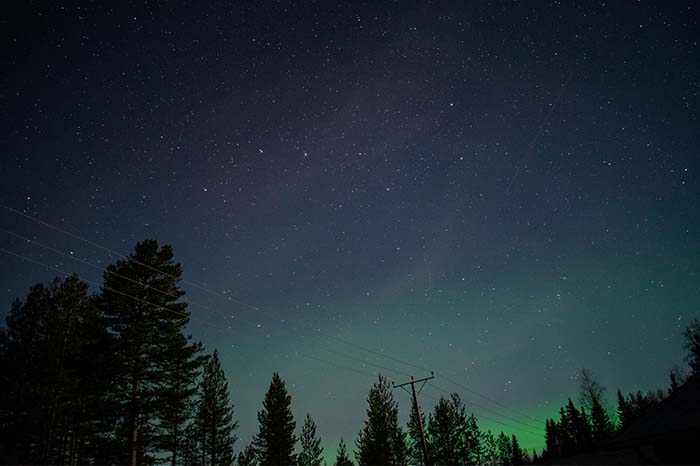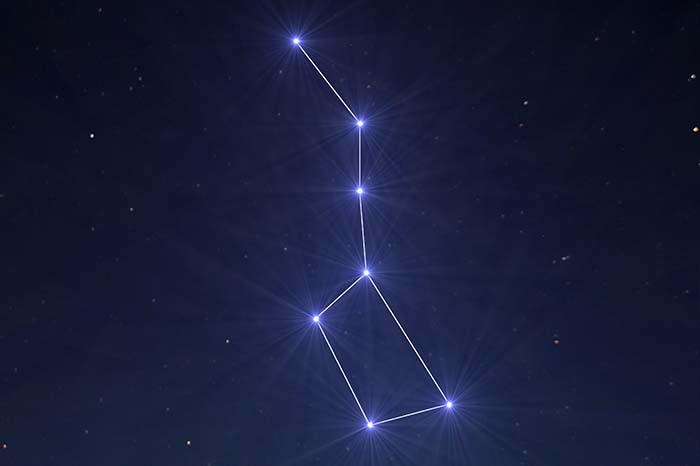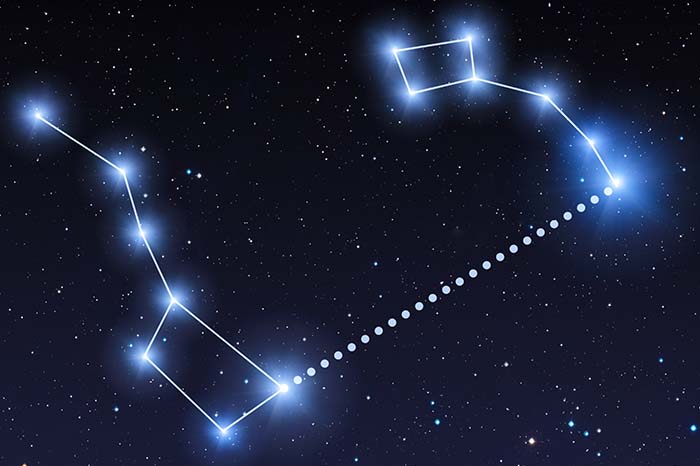Ursa Major Constellation
Of the many constellations of stars in the sky, the Ursa Major is the best known - although often not by its correct name. We all associate the Plough, and can even locate it in the sky, but few know that it is part of the Ursa Major. This constellation is rich in many interesting objects - not only stars, but also nebulae and galaxies. It is worth getting to know it more closely - especially if you plan to observe the night sky.
Ursa Major and Ursa Minor - mythologies associated with them
Man was already watching the stars in the sky in ancient times, and it was this period in human history that gave us the knowledge we still use today. Thanks to the discoveries and achievements of that time, the cosmos, or rather what its celestial sphere presents to us, has a little less mystery for us. Modern inventions such as the telescope and the scope help us today in their further discovery. The constellations of the stars and the signs of the zodiac were also named, and described just in antiquity. Man is used to recognizing a familiar shape in natural formations: in rocks, the arrangement of the peaks of mountain ranges or just in the stars. This was also what guided the naming of the constellations.
The constellation Ursa Major is also known as the Great Bear. Ancient scholars often found in constellations the shapes of animals and figures: real and those from mythology. This is also where the name of the Great Bear came from. According to Greek mythology, it represents the nymph Callisto, who Zeus was charmed with. She bore him a son, Arkas, and soon after this event a jealous Hera turned her into a bear. Arkas grew up without knowing his mother and evolved into an avid hunter. On one occasion he just met Kalisto in the forest and was already putting together a shot, but at the last moment Zeus turned him into a bear as well and placed him and his mother in the sky.

The system of stars forming the constellation of the Ursa Major
The Great Bear - Ursa Major in Latin - is the third largest constellation in the sky. The shape of the bear was recognized in it by all peoples of Europe, Asia and North America. This star system adorns the northern sky, more specifically, the area around the north pole. About 125 stars of Ursa Major are visible to the naked eye, and the brightest one is Alioth, located in the long tail of the Great Bear. Other very bright stars in the system include the explosive variable star SU Ursae Majoris, which belongs to the dwarf stars, or Ksi Ursae Majoris, a double star that only needs a small telescope to observe. The brightest stars in Ursa Major are, of course, those arranged in the shape of Big Dipper. This is such a popular asterism that it is worth dedicating a separate chapter to it.
The Big Dipper - the best known part of the Great Bear Constellation
The Ursa Major is sometimes incorrectly referred to as Big Dipper. Probably because its brightest stars form an asterism that is very visible to the naked eye, and recognizing the Great Bear itself is more difficult. It is worth mentioning here that the Bid Dipper is not a constellation and should not be called so. It is an asterism, that is, a characteristic arrangement of stars that is part of one constellation (as in this case) or its stars belong to different systems.
The Big Dipper is made up of the seven brightest stars belonging to the Ursa Major: these are the already mentioned Alioth, as well as Dubhe, Merak, Phecda, Megrez, Mizar and Alkaid. Alioth, Mizar and Alkaid are the drawbar of the plough and also the tail of the Great Bear, while another four stars form the quadrant of the wagon and part of the back.

Other well-known objects of the Ursa Major
The Ursa Major is not only the best recognized asterism, the Big Dipper, but also other interesting cosmic objects. The Owl Nebula a circular planetary nebula, whose brightest star is located between two darker points - the whole resembles an owl's head. Its mass is twice the mass of our Sun. M101, on the other hand, is an extended spiral galaxy. It is similar to the Milky Way and twice as small as our galaxy. Another spiral galaxy, M108, on the other hand, exceeds the mass of the sun by 14 billion times. There are many more fascinating objects in the Great Bear area. Of course, they are not visible to the naked eye like the Big Dipper, but you don't usually need a professional telescope to view them. Often a small telescope is enough, but you need to know where to look for them.

When and from where to observe the Ursa Major constellation and the Big Dipper?
The Ursa Major, also know as Great Bear, is a very good object to observe, because from the United Kingdom we can see it all year round. It is located in the northern sky, near the pole. Its brightest stars, forming the Big Dipper, are perfectly visible to the naked eye and even a layman can locate them in the sky. This is so easy that very often the Big Dipper serves as a waypoint in the sky, through which we can also locate other celestial bodies. At the extension of the line connecting Merak and Duphe is the Pole Star, which is the object closest to the North Pole. A five-fold extension of the line on which Megrez and Merak are located will in turn allow us to discover Castor from the constellation of the Gemini. Of course, over the course of the year, we can observe the movement of stars in the sky, so in spring the Big Dipper is highest in the sky, and in autumn it is closest to the horizon
A great number of Ursa Major objects are visible to the naked eye or we can observe them with amateur telescopes. The double star Alkor was even once used for testing, during recruitment for the Napoleonic army. Arabs and Indians also tested their eyesight in this way. If we are not able to see Alkor with the naked eye, they probably would not accept us into Napoleon's Army, but fortunately we can use a telescope for this purpose. Equipment with a diameter of 25 cm will also allow us to see many other objects belonging to the Ursa Major. The Big Dipper will also show us other constellations. This area of the sky is very good for both professional and amateur observations. There is something for everyone there.
Check out similar entries:



